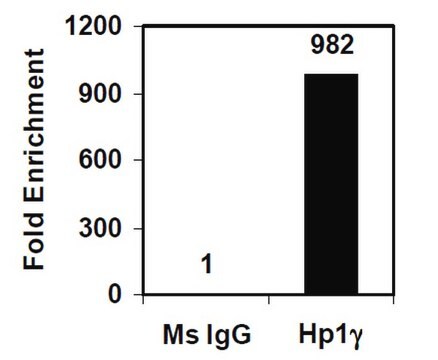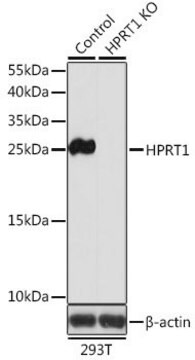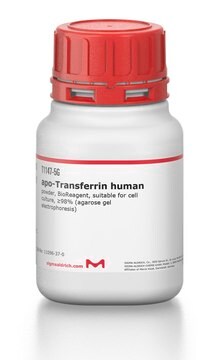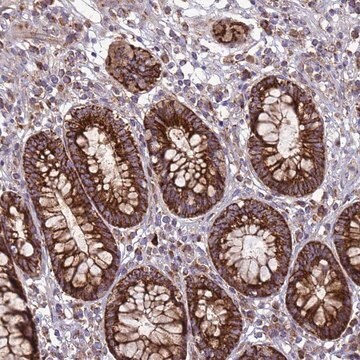おすすめの製品
詳細
Powered by Eupheria Biotech
品質水準
製品種目
MISSION®
フォーム
lyophilized powder
esiRNA cDNA標的配列
AGCTCACATGGCTTTGGAACAAGACCACTGGATCCAGGAACAGCAGGTCCCAGAGTTTGGTACAGGCCAATTCCAAGTCATATGCCTAGTCTGCATAATATCCCAGTGCCTGAGACCAACTATCTAGGAAATACACCCACCATGCCATTCAGCTCCTTGCCACCAACAGATGAATCTATAAAATATACCATATACAATAGTACTGGCATTCAGATTGGAGCCTACAATTATATGGAGATTGGTGGGACGAGTTCATCACTACTAGACAGCACAAATACGAACTTCAAAGAAGAGCCAGCTGCTAAGTACCAAGCTATCTTTGATAATACCACTAGTCTGACGGATAAACACCTGGACCCAATCAGGGAAAATCTGGGAAAGCACTGGAAAAACTGTGCCCGTAAA
Ensembl |ヒトアクセッション番号
NCBIアクセッション番号
輸送温度
ambient
保管温度
−20°C
遺伝子情報
human ... RIPK1(8737) , RIPK1(8737)
関連するカテゴリー
詳細
MISSION esiRNA are endoribonuclease prepared siRNA. They are a heterogeneous mixture of siRNA that all target the same mRNA sequence. These multiple silencing triggers lead to highly-specific and effective gene silencing.
For additional details as well as to view all available esiRNA options, please visit SigmaAldrich.com/esiRNA.
For additional details as well as to view all available esiRNA options, please visit SigmaAldrich.com/esiRNA.
法的情報
MISSION is a registered trademark of Merck KGaA, Darmstadt, Germany
保管分類コード
10 - Combustible liquids
引火点(°F)
Not applicable
引火点(℃)
Not applicable
Norberto Gonzalez-Juarbe et al.
Scientific reports, 8(1), 5846-5846 (2018-04-13)
Pore-forming toxins are the most common virulence factor in pathogenic bacteria. They lead to membrane permeabilization and cell death. Herein, we show that respiratory epithelial cells (REC) undergoing bacterial pore-forming toxin (PFT)-induced necroptosis simultaneously experienced caspase activation independently of RIPK3.
Nyree Crawford et al.
Cell death and differentiation, 25(11), 1952-1966 (2018-03-04)
Apoptosis resistance contributes to treatment failure in colorectal cancer (CRC). New treatments that reinstate apoptosis competency have potential to improve patient outcome but require predictive biomarkers to target them to responsive patient populations. Inhibitor of apoptosis proteins (IAPs) suppress apoptosis
R S Al-Lamki et al.
Cell death & disease, 7(6), e2287-e2287 (2016-07-01)
We previously reported that renal clear cell carcinoma cells (RCC) express both tumor necrosis factor receptor (TNFR)-1 and -2, but that, in organ culture, a TNF mutein that only engages TNFR1, but not TNFR2, causes extensive cell death. Some RCC
Yoshiko Kaku et al.
Cellular signalling, 27(9), 1713-1719 (2015-05-26)
The present study investigated 1,2-diarachidonoyl-sn-glycero-3-phosphoethanolamine (DAPE)-induced cell death in malignant pleural mesothelioma (MPM) cells. DAPE reduced cell viability in NCI-H28, NCI-H2052, NCI-H2452, and MSTO-211H MPM cell lines in a concentration (1-100μM)-dependent manner. In the flow cytometry using propidium iodide (PI)
Yuichi Miki et al.
Lasers in medical science, 30(6), 1739-1745 (2015-06-26)
Photodynamic therapy (PDT) using photosensitizer induces several types of cell death, such as apoptosis, necrosis, and autophagy, depending on the PDT procedure, photosensitizer type, and cell type. We previously demonstrated that PDT using the photosensitizer talaporfin sodium (mono-L-aspartyl chlorine e6
ライフサイエンス、有機合成、材料科学、クロマトグラフィー、分析など、あらゆる分野の研究に経験のあるメンバーがおります。.
製品に関するお問い合わせはこちら(テクニカルサービス)








